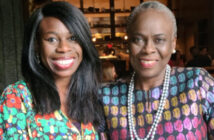By Marijke Wijnroks
Despite the progress made against HIV, with tens of millions of people receiving lifesaving drugs and declines in infection rates, we now face the challenge of accelerating and sustaining these gains, especially among young people.
It’s not easy to navigate adolescence under the best of circumstances. But in places with high prevalence of poverty and HIV, all the challenges are magnified. Girls and young women, in particular, face extraordinary levels of risk. In South Africa, young women aged 15-24 years are eight times more likely than their male peers to be living with HIV.
At the same time, there is a growing “youth bulge” in many countries, making high infection rates among adolescents even more dangerous. If we do not change the way we approach young people – including young people from key population groups who are often left behind in terms of service provision and access – the trajectory of HIV infection rates may reverse, and climb higher by 2030 than it was in 2000.
The face of the epidemic has changed, and so must our response. We should not look at young people as infections to be averted, but as potential to be unleashed. That can only happen when prevention and treatment programmes meant to reach young people are designed by and for them.
In addition to funding youth-friendly treatment and prevention programmes in many countries, the Global Fund is actively supporting programmes that are specially geared toward, and run by, young people in the most affected countries in southern and East Africa. Innovative, inclusive approaches will help identify and eliminate human rights-related barriers for young people from criminalized and socially marginalized communities.
RISE Young Women’s Clubs in South Africa are a compelling case of how HIV prevention can be achieved through a positive youth development programme. These clubs offer opportunities for adolescent girls to gain leadership experience, to practice empathy and compassion as their peers face challenging decisions and to be mentored by young women role models. They also have a lot of laughs. The focus is on the girls’ strengths, not problems.
A youth-centred approach to ending the HIV epidemic demands that we see and respond to the whole person. When equipped with life skills, including sexuality education, and given the chance to express themselves without judgment, the results can be highly effective. Together, we can leverage family, friends, school and goal setting into protective, empowering influences.
As a health professional and as a mother, I am deeply concerned about the current crisis of HIV among young people, especially adolescent girls and young women. Tackling it means involving young men and boys, as well as young women and girls, in human-centred design of programmes that will begin to address the gaps and deficiencies in current programming.
Smart investment can do more than halt the HIV epidemic. It can return a demographic dividend by helping the youth of today and leaders of tomorrow live healthier lives and build more just and prosperous societies.
Marijke Wijnroks is the Interim Executive Director of the Global Fund to Fight AIDS, Tuberculosis and Malaria




